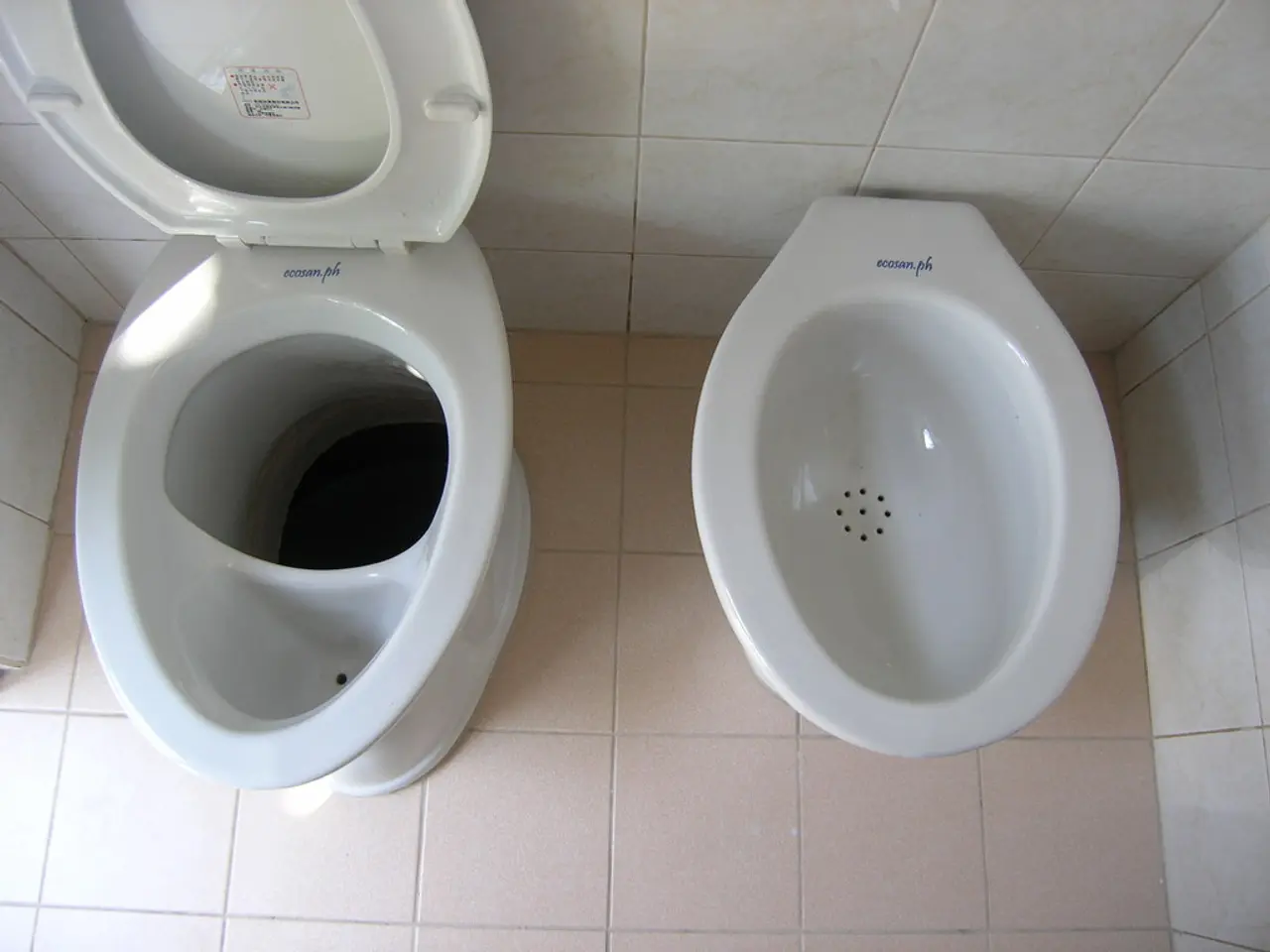Connection between Hemorrhoids and Hyperactive Bladder: Examining the Relationship
In the realm of pelvic health, two common conditions that often intersect are hemorrhoids and overactive bladder (OAB). Both conditions can be troubling and affect quality of life.
Hemorrhoids, enlarged veins in or around the anus, can be internal or external. Internal hemorrhoids form inside the rectum and are typically painless, but may cause discomfort if they become prolapsed and slip outside the anus. External hemorrhoids, on the other hand, form around the opening of the anus and are usually painless unless they are swollen or a blood clot forms.
Common underlying issues for both conditions involve pelvic floor weakness and bowel dysfunction. One of the key contributors is constipation and straining, which increases abdominal pressure and worsens hemorrhoids by engorging anal veins. Similarly, constipation and straining can put pressure on the bladder and pelvic muscles, contributing to OAB symptoms.
Weak pelvic floor muscles also play a significant role. They reduce support for both the rectum and bladder, leading to hemorrhoids due to poor venous return, and contributing to OAB by reducing bladder control.
Bladder and bowel irritants, such as caffeine and carbonation, are known to exacerbate OAB symptoms and are also linked to constipation, indirectly impacting hemorrhoids.
Hormonal shifts can influence tissue elasticity and muscle tone in the pelvic region, impacting both hemorrhoids and bladder function.
First-line treatments for hemorrhoids include avoiding constipation by staying hydrated and eating high fiber foods, treating constipation with stool softeners or fiber supplements, and avoiding forced bowel movements. For OAB, first-line treatment involves behavioral therapy, such as changing bathroom habits, double voiding, pelvic floor exercises, urge control techniques, managing fluid intake, reducing caffeine intake, avoiding bladder irritants, and losing weight.
If hemorrhoid symptoms persist or worsen, nonsurgical procedures like rubber band ligation, sclerotherapy, infrared photocoagulation, and electrocoagulation may be recommended. For OAB, if first-line and second-line treatments are ineffective, neuromodulation therapy, Botox treatment, surgery, and biofeedback may be considered.
It's important to note that a person who presents with both hemorrhoids and OAB will likely require separate treatments for the two conditions. Addressing pelvic floor strength and bowel habits often helps manage both conditions.
[1] Pelvic Floor Dysfunction and Its Relationship with Hemorrhoids and Overactive Bladder. (2021). Journal of Pelvic Medicine. [2] Management of Hemorrhoids. (2019). American Society of Colon and Rectal Surgeons. [3] Overactive Bladder. (2020). National Institute of Diabetes and Digestive and Kidney Diseases. [4] Overactive Bladder: Diagnosis and Treatment. (2019). Mayo Clinic. [5] Constipation and Straining: Their Impact on Hemorrhoids and Overactive Bladder. (2020). European Journal of Surgical Oncology.
- Chronic-kidney-disease patients may also experience hemorrhoids, as kidney diseases can cause fluid retention, leading to constipation and increased abdominal pressure.
- In addition to pelvic health, CBD oil is sometimes used to manage neurological-disorders like migraines and anxiety, which are mental-health conditions.
- Eczema, a skin-care issue, can trigger constipation due to the intense itching sensation, indirectly impacting digestive-health.
- Autoimmune-disorders such as rheumatoid arthritis can affect bladder health, contributing to overactive bladder symptoms.
- Fitness-and-exercise plays a crucial role in managing obesity, a chronic-disease that often leads to numerous health-and-wellness complications, including hemorrhoids and urinary-health issues.
- Predictive analysis in science can help identify individuals at risk of developing chronic-diseases like diabetes, which is closely linked to obesity and can worsen hemorrhoid symptoms.
- In some cases, hemorrhoids can cause or worsen depression, due to discomfort, embarrassment, and the impact on quality of life.
- Skin-care products containing harsh chemicals can irritate the sensitive skin around the anus, exacerbating hemorrhoids.
- Respiratory-conditions like asthma can be managed through a combination of medication, lifestyle changes, and fitness-and-exercise, which can indirectly help reduce constipation and the risk of hemorrhoids.
- Medication used to treat OAB, such as anticholinergics, can cause dry mouth, constipation, and urinary retention, which may indirectly affect hemorrhoid symptoms.
- In severe cases of hemorrhoids, chronic-diseases like chronic kidney disease or obesity might require a multidisciplinary approach, involving medical specialists, dieticians, and fitness professionals, to manage both conditions effectively.




